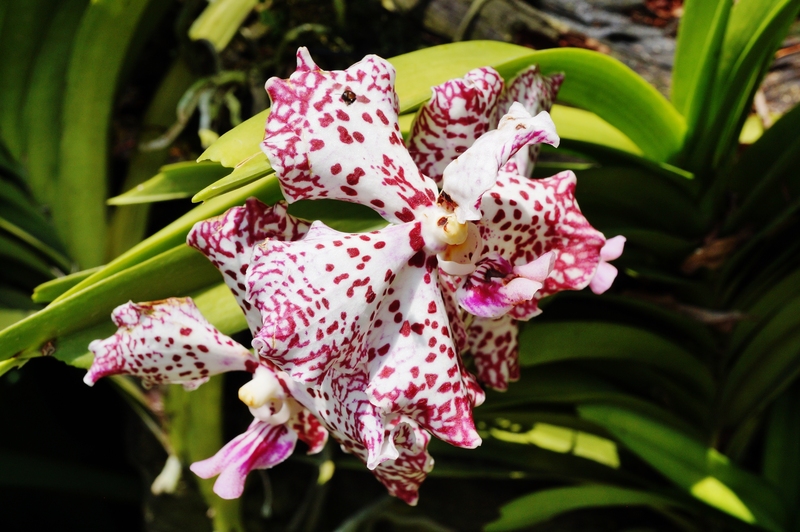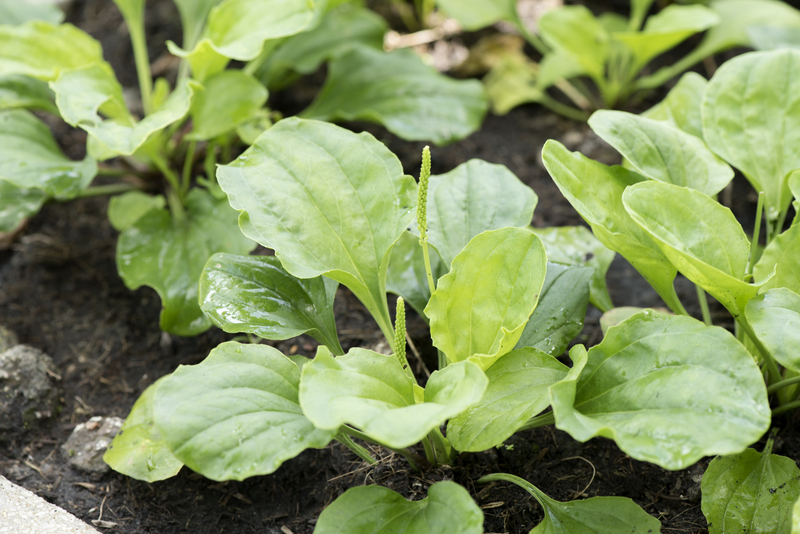Mastering the Essentials of Container Gardening
Posted on 02/07/2025
Mastering the Essentials of Container Gardening
Unlock the vibrant world of container gardening and cultivate thriving plants in any space--big or small. Whether you're a seasoned gardener or just starting, this comprehensive guide will help you master the essential skills for successful balcony, patio, or indoor container gardens.
Understanding the Basics of Container Gardening
Container gardening is the art of growing plants, herbs, vegetables, and flowers in pots, tubs, or alternative containers rather than the ground. It offers flexibility for gardeners with limited space, the ability to control soil and moisture, and a creative avenue to beautify any environment.
Why Choose Container Gardening?
- Versatility: Create a garden on balconies, patios, decks, porches, or indoors.
- Accessibility: Ideal for those with limited mobility--containers can be raised for easier access.
- Pest & Disease Control: Isolate plants to reduce the spread of problems.
- Design Freedom: Experiment with colors, arrangements, and heights wherever you like.
- Easy Maintenance: Containers often need less weeding and are easier to monitor and adjust.

Selecting the Right Containers for Your Garden
The success of your container garden begins with choosing suitable pots or vessels for your plants. The right containers offer both function and aesthetic appeal.
Popular Types of Containers
- Clay & Terracotta Pots: Attractive and porous, perfect for Mediterranean plants, but dry out quickly.
- Plastic Planters: Lightweight, affordable, and moisture-retentive--great for most plants.
- Ceramic Containers: Offer vibrant glazes and designs, but can be heavy and may need drainage holes.
- Wooden Boxes: Rustic appearance, good insulation for plant roots, but need lining to prevent rot.
- Metal Tubs & Buckets: Durable and stylish, but may heat up or corrode over time.
- Upcycled Containers: Old boots, baskets, or barrels are eco-friendly and unique conversation pieces.
What to Consider When Choosing a Container
- Size: Must accommodate the mature root system of your chosen plants.
- Drainage: Proper drainage holes are essential to prevent root rot.
- Material: Affects heat, breathability, and durability.
- Mobility: Consider weight if you plan to move containers.
- Style: Select forms and colors that complement your space and personal style.
Choosing the Best Potting Mix
One of the secrets to container gardening success is the potting medium. Garden soil can be too dense for pots and may harbor pests. Choose a high-quality, soilless potting mix designed for containers.
What Makes a Good Potting Mix?
- Lightweight and Well-draining: Prevents waterlogged roots.
- Moisture Retention: Includes ingredients like peat moss or coconut coir.
- Nutrient-rich: May contain compost, slow-release fertilizers, or worm castings.
- Free of Weeds and Disease: Sterile mixes protect your plants from pests.
Improving Your Potting Mix
Enhance store-bought mixes with:
- Perlite or Vermiculite: For better drainage and aeration.
- Organic Compost: Boosts nutrients and soil life.
- Slow-release Fertilizer: Ensures steady feeding throughout the season.
Mastering Plant Selection for Containers
Not all plants are suited for container life. Mastering the essentials of potted gardening means choosing varieties that thrive in limited space and adapt well to container conditions.
Top Choices for Container Gardens
- Herbs: Basil, parsley, chives, mint, rosemary, and thyme are compact and productive.
- Vegetables: Lettuce, spinach, kale, cherry tomatoes, chillies, radishes, bush beans, and dwarf varieties of carrots or eggplant.
- Flowers: Petunias, geraniums, marigolds, impatiens, pansies, begonias, and dwarf sunflowers for colorful displays.
- Fruit: Strawberries, alpine berries, compact blueberries, and patio citrus trees.
- Houseplants or Ornamentals: Ferns, succulents, snake plants, and palms for indoor style.
Understanding Plant Needs
- Light Requirements: Assess the amount of sunlight in your chosen location--full sun, partial shade, or full shade--and select plants accordingly.
- Watering Needs: Group plants with similar moisture preferences together.
- Growth Habit: Pair plants by growth speed, height, and spread for harmonious combinations.
- Seasonality: Rotate annuals, perennials, and edibles for year-round interest.
Planting Your Container Garden Like a Pro
Planting in containers may seem straightforward, but a strategic approach ensures lush, healthy growth and minimal issues.
Step-by-Step Planting Guide
- Select containers with ample room for roots and proper drainage holes.
- Add a drainage layer: Stones or broken pottery shards can prevent clogged holes (optional, not essential if your potting mix drains well).
- Fill with potting mix: Leave about 2 cm (1 inch) at the top for watering.
- Arrange your plants: Place tall plants in the center or back, trailing varieties around the edges, and mid-height plants in-between for a full, layered look.
- Water thoroughly: After planting to help settle the soil around the roots.
- Add mulch (optional): Helps retain moisture and suppress weeds in larger containers.
Watering and Feeding Essentials for Container Plants
Consistent watering and nutrition are among the most vital aspects of mastering container gardening. Container-grown plants rely entirely on you for their moisture and nutrient needs.
How Often Should You Water?
- Check moisture daily, especially in hot weather--pots dry out faster than the ground.
- Water deeply until excess runs from the drainage holes.
- Morning is the best time to water to reduce evaporation and fungal diseases.
- Avoid letting soil dry completely, but don't let it stay soggy.
- Use saucers to catch excess water but empty them regularly to prevent root rot.
Fertilizing Tips for Lush Container Gardens
- Mix slow-release fertilizer into potting mix or apply liquid feed every 2-4 weeks, especially for heavy feeders like tomatoes and flowering annuals.
- Organic options such as fish emulsion, seaweed extract, or compost tea support soil health and plant growth.
- Avoid over-fertilizing as this can burn roots or cause salt buildup.
Managing Pests, Diseases, and Common Challenges
Container gardens often avoid some problems found in traditional beds, but pests and diseases can still occur.
Preventing and Solving Issues
- Choose healthy, pest-resistant plants.
- Keep foliage dry and space plants for good air circulation.
- Inspect regularly for insects, spots, or signs of mildew.
- Hand-pick pests or use organic sprays (neem oil, insecticidal soap) if necessary.
- Remove dead leaves and fallen debris to prevent mold and rot.
- Refresh potting mix yearly for best results and to avoid soil-borne problems.
Designing Beautiful and Productive Container Gardens
Mastering the art of container gardening is not just about practicality--it's also an opportunity for creative expression. Play with color, height, texture, and fragrance for stunning displays.
Tips for Eye-catching Designs
- Follow the "Thriller, Filler, Spiller" rule:
- Thriller: A tall, dramatic plant for the center or back.
- Filler: Midsized, bushy plants to fill space and add color.
- Spiller: Trailing or cascading plants to soften edges.
- Combine blooming annuals and evergreen perennials for year-round appeal.
- Use color palettes to match your home or coordinate with the seasons.
- Integrate edible plants with ornamentals--herbs like basil and thyme are both beautiful and useful!
- Cluster multiple pots at varying heights for visual interest.
Seasonal Container Gardening: Adapting Through the Year
The beauty of container gardening is its adaptability to every season. Plan for year-round interest and productivity by changing plantings as needed.
Spring and Summer
Plant bright annuals, leafy greens, and heat-loving herbs and vegetables. Water more frequently as temperatures rise.
Fall
Switch to cool-season crops like kale, pansies, and ornamental cabbages. Add decorative gourds or small pumpkins for autumn flair.
Winter
- Choose evergreen shrubs, hardy succulents, or colorful stems and berries for interest.
- In cold climates, protect containers by moving them to sheltered spots or wrapping them with burlap.
- Reduce watering, as growth slows.
Expert Tips for Mastering Container Gardening
- Rotate containers every few weeks for even sun exposure and balanced growth.
- Repot root-bound plants: When roots circle the pot or soil dries too quickly, size up your container.
- Refresh topsoil and add new compost or fertilizer between plantings.
- Keep records of plant varieties, arrangements, feeding, and pest issues for future improvement.
- Have fun! Mix colors, scents, and textures to delight your senses.

Frequently Asked Questions About Container Gardening
- Can I grow vegetables in small containers?
Yes! Choose compact or bush varieties and provide ample water and sunlight for a productive harvest, even in small pots. - Do container gardens need special care over winter?
In cold regions, insulate containers or move them to protected areas. Water sparingly and use hardy plants for winter interest. - Is drainage really necessary?
Absolutely. Without drainage, soil becomes waterlogged, leading to root rot and plant death. - Can I reuse potting mix?
Yes--with caution. Remove old roots, replenish nutrients, and watch for signs of disease before reusing. - What if my container plants stop flowering or growing?
Check for nutrient deficiencies, proper light, and possible root crowding. Repot, feed, and adjust location as needed.
Conclusion: Embrace the Joy of Container Gardening
Mastering the essentials of container gardening transforms any space--urban or rural, large or small--into a lush, productive oasis. By choosing the right containers, quality potting mix, suitable plants, and maintaining proper care, you'll cultivate spectacular displays and even a mini-harvest of fresh herbs and veggies.
Explore your creativity, experiment with arrangements, and enjoy the satisfaction of nurturing flourishing plants right at your door. Whether you're growing a simple pot of basil on your windowsill or transforming your patio into a floral paradise, the power of container gardening is within your reach.
Start your journey today, and master the essentials of container gardening for a greener, more beautiful life!

